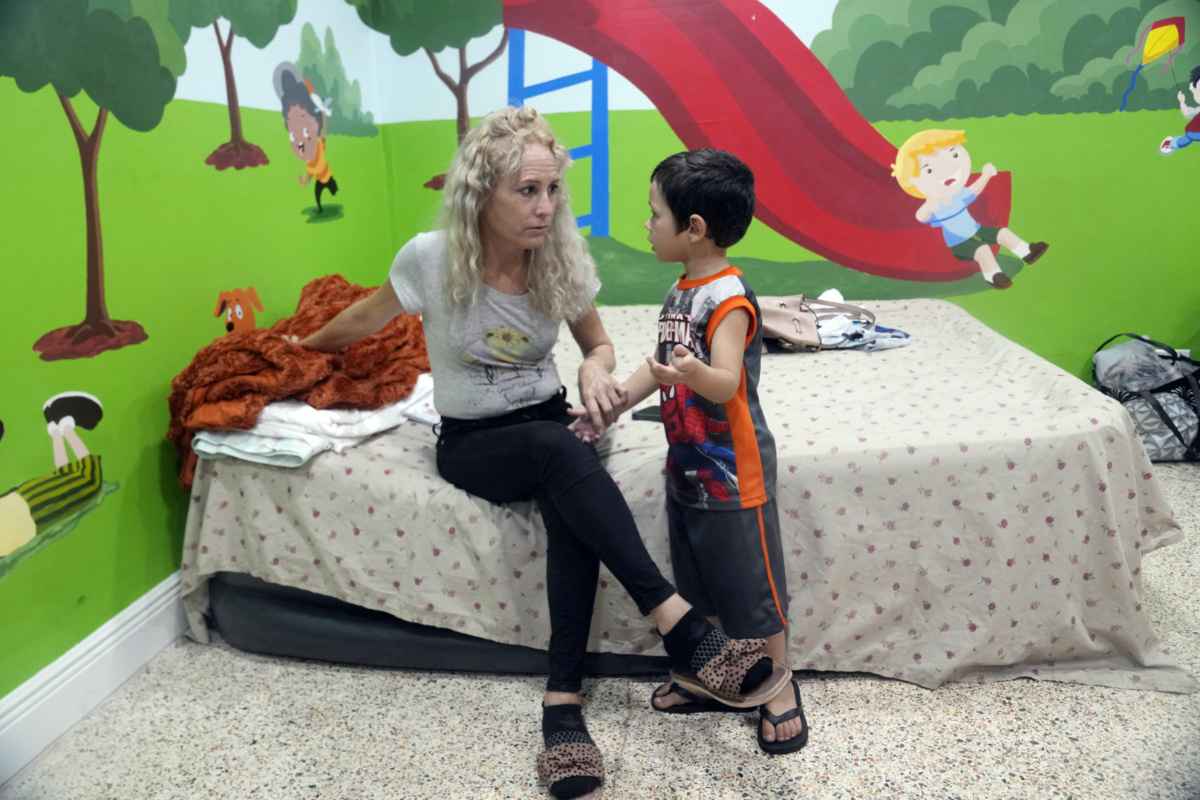
GIOVANNA DELL’ORTO, of Associated Press, reports on how faith communities in Miami are caring for migrants…
Hialeah, Florida
AP
A few days after selling all she had to flee Cuba with her three children on a crowded boat, Daneilis Tamayo raised her hand in praise and sang the rousing opening hymn at Sunday worship in this Miami suburb.
“The only thing that gave me strength is the Lord. I’m not going to lose my faith, whatever I might go through,” she said later, sitting on a mattress in one of Iglesia Rescate’s classrooms. She and her children, ages 16, eight and three, have been sleeping in the church’s improvised shelter since the promises of help made by her contact in the United States turned out to be “all lies.”

Daneilis Tamayo listens to her son Daniel, three, in the Iglesia Rescate church school classroom her family uses overnight, on Tuesday, 21st February, 2023, in Hialeah, Florida. Daneilis arrived in the US with her three children on an overcrowded boat from Cuba. The family wonders the city during the day until they are able to rest in the classrooms in the evening. The church supplies portable showers and toilets. PICTURE: AP Photo/Marta Lavandir.
In the past 18 months, an estimated 250,000 migrants and asylum-seekers like Tamayo have arrived in the Miami area after being granted only precarious legal status. It often doesn’t include permission to work, which is essential to building new lives in the US.
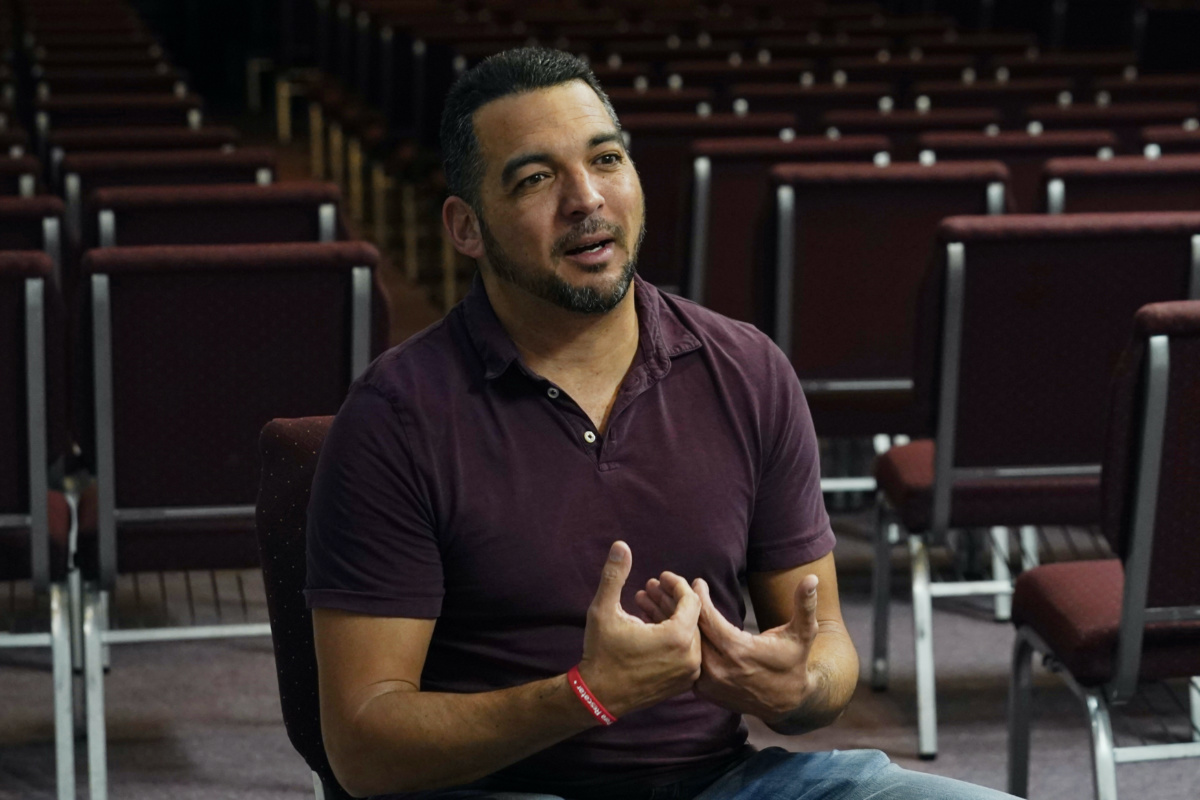
Rev David Monduy speaks at his church, Iglesia Rescate, on Tuesday, 21st February, 2023, in Hialeah, Florida. PICTURE: AP Photo/Marta Lavandier.
“The Lord says to welcome the stranger. It’s the saddest thing, the quantity of people who come and we can’t help them,”
– Rev David Monduy, Iglesia Rescate’s senior pastor, who came from Cuba more than a decade ago
The influx is maxing out the migrant social safety net even in Miami’s faith communities, which are long accustomed to integrating those escaping political persecution, a lack of freedoms and a dearth of basic necessities. Cubans were the first to arrive during the island’s communist revolution 60 years ago, and they’re still fleeing here alongside Haitians, Nicaraguans and Venezuelans.
“The Lord says to welcome the stranger. It’s the saddest thing, the quantity of people who come and we can’t help them,” said Rev David Monduy, Iglesia Rescate’s senior pastor, who came from Cuba more than a decade ago.
Miami’s faith leaders and their congregations remain steadfast in their mission to help settle new migrants. But they’re sounding the alarm that the need is growing unmanageable – and could get worse without federal reforms providing permanent legal status and work permits.
“We can get a call on a Saturday that 30 migrants were dropped off, and two hours later all have been picked up,” said Peter Routsis-Arroyo, the CEO of Catholic Charities in Miami. “But the challenge is at what point you reach saturation.”
The number of arrivals, by sea directly to Florida and from those heading here from the US-Mexico border, surged earlier this winter. A temporary humanitarian parole program aimed at preventing illegal border crossings is expected to bring even more people, because it applies to the four countries with large diasporas already in Miami.
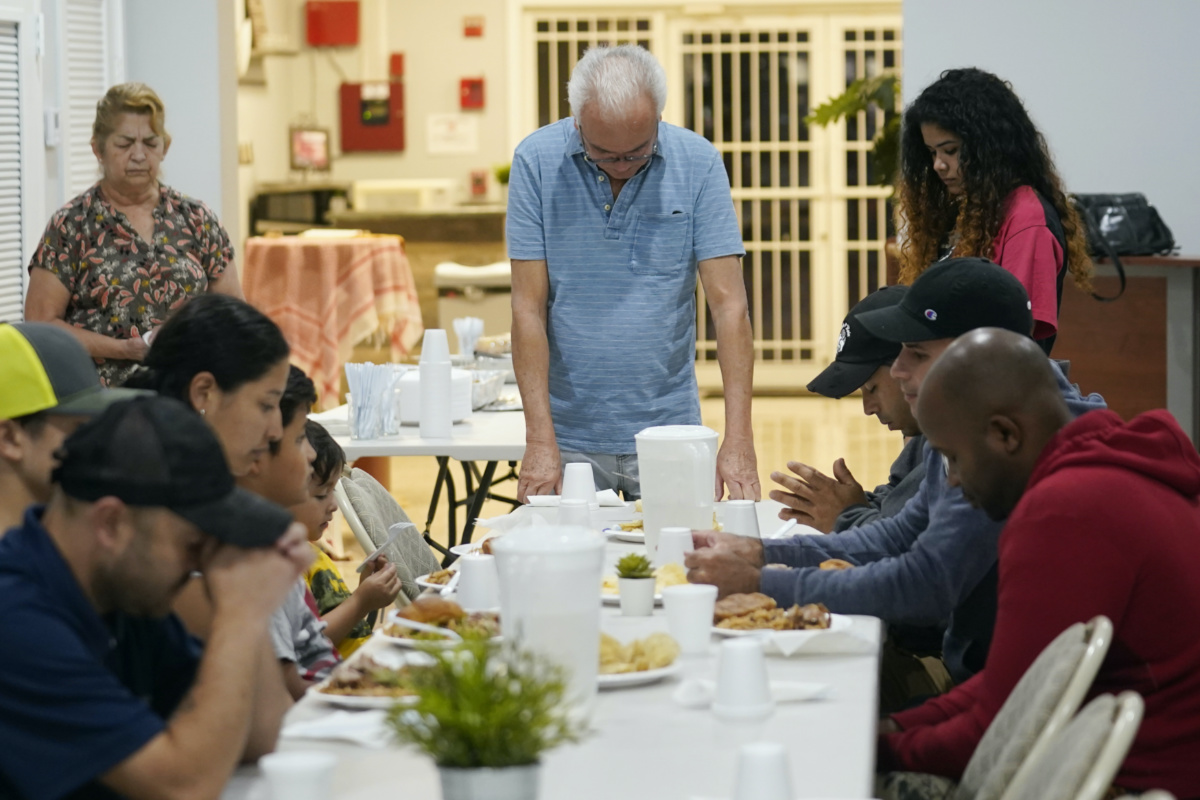
Daniel Monduy leads a group of newly arrived migrants in prayer before dinner at the Iglesia Rescate, on Tuesday, 21st February, 2023, in Hialeah, Florida. PICTURE: AP Photo/Marta Lavandier.
For most newcomers, the best hope to settle in the US is to win asylum, but immigration courts are so backlogged migrants can be in limbo for years, ineligible to get a job legally. Advocates say that makes them vulnerable to criminals, puts an impossible financial burden on existing migrant communities that try to help, and slows down integration into US society.
“It’s completely irrational that they’re not giving out work permits,” said Miami Archbishop Thomas Wenski, whose Catholic archdiocese has long helped welcome migrants. “Because of that, the government can make a situation that’s not too bad yet, become worse.”
Many migrants are homeless due to soaring rent and motel rates. Faith leaders say some are paying $US800 a month for an inflatable mattress in a living room or staying in a single-family home with more than a dozen relatives.
“Every day, people knock on the doors of our parishes, saying they have no place to sleep,” said Rev Marcos Somarriba, rector at St Agatha Catholic Church on Miami’s outskirts, who came to Florida more than 40 years ago as a teen fleeing Nicaragua.
In addition to providing food, clothes and some housing relief, Somarriba’s and other churches are helping educate migrants about their legal options. At St Agatha, a recent informational event about asylum drew 500 people.
St Michael the Archangel Catholic Church, a few miles away, put together a migration forum with Catholic Legal Services in mid-February. Three dozen people listened intently as attorneys explained the new humanitarian parole program that allows 30,000 Cubans, Haitians, Nicaraguans and Venezuelans into the US each month if they have a sponsor who assumes financial responsibility for them for two years.
Parishioner Dalia Marrero attended to learn about sponsoring an uncle having “political problems” in Nicaragua, where many are fleeing President Daniel Ortega’s crackdown on opponents.
“I don’t want to fail him or US law,” she said, worried about how long she’d be required to support her relative.
Another Nicaraguan migrant, Ileana Luna, nodded in agreement. Her niece wants to come to the US, but with two children and exorbitant rent, Luna can’t afford to be her sponsor.
“Simply, when you can’t, you can’t,” she said.
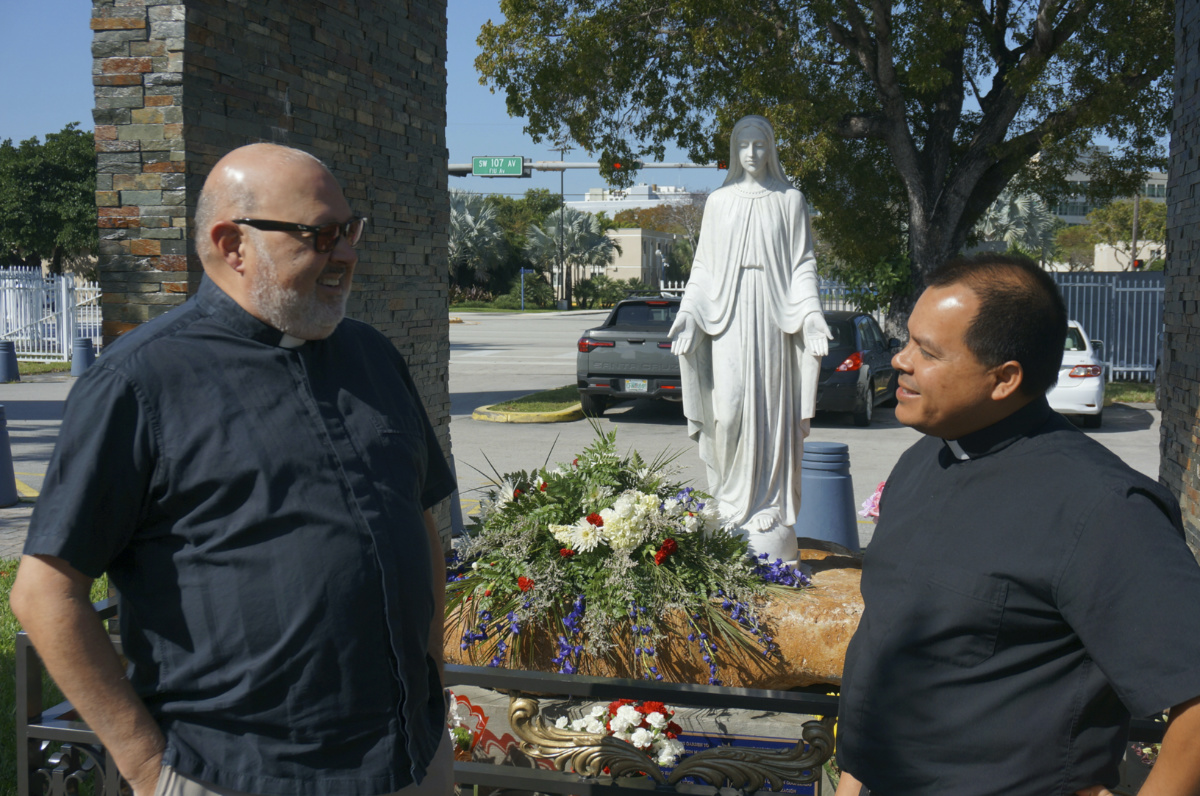
Rev Marcos Somarriba, left, pastor of St Agatha Catholic Church, and Rev Elvis González, pastor of St Michael Catholic Church, talk in front of a statue of the Virgin Mary on the campus of St Agatha, on Monday, 20th February, 2023 in Miami. The two Catholic priests, originally from Nicaragua, have been helping those fleeing the Central American country and settling in the Miami area by connecting them with legal, housing and humanitarian resources. PICTURE: AP Photo/Giovanna Dell’Orto.
At a pork and rice weekly dinner cooked by the parents of Iglesia Rescate’s pastor, three Cuban men who arrived in recent months voiced similar concerns about how harsh the reality is, even as they remain determined to get settled and bring their families after they get legal status.
“Nobody tells you the bad [side],” said Randy Smith, who was a doctor in Cuba.
Miami’s established diaspora communities know all too well the hardships that migrating entails, and that motivates many to help. But there also is mistrust among some old timers who remain active in opposition to autocratic regimes like Cuba’s and view some new arrivals’ politics with suspicion, said Jorge Duany, director of the Cuban Research Institute at Florida International University.
That underscores the potentially crucial role for faith leaders – to preach forgiveness and build a sense of shared experience.
“That’s it – to unite,” said Rev Elvis González, pastor at St Michael the Archangel, a historically Cuban church that welcomes faithful from across Central America. “They have seen the church as the only institution that can give some hope.”
We rely on our readers to fund Sight's work - become a financial supporter today!
For more information, head to our Subscriber's page.
A few miles south on the seashore stands La Ermita, a shrine dedicated to Our Lady of Charity that’s long been a beacon for Cuban exiles. It’s one of the first stops for many migrants from across the region, said its rector, Rev José Espino, who at five-years-old was one of thousands of children sent to the United States after the Cuban revolution.
Migrants come to bring sunflowers to the Virgin, to cry in gratitude for having made it and to ask for help with food and clothing, said Sister Consuelo Gómez.
“Jesus also was a migrant,” said Gómez, who helps many newcomers find jobs and decent housing, often with the aid of diaspora members. “We try to help so that they can get ahead on their own.”
Among them was Rognierys Señaris Brito, a Cuban who volunteers at the shrine on her breaks from working as housekeeper for a woman who fled the island ahead of Fidel Castro’s takeover.
Last year, Señaris’ brother, a father of two, also arrived, after a long, traumatic journey up Central America where he saw fellow migrants die.
“The first thing he did was come here,” Señaris said at a recent Mass at the shrine.
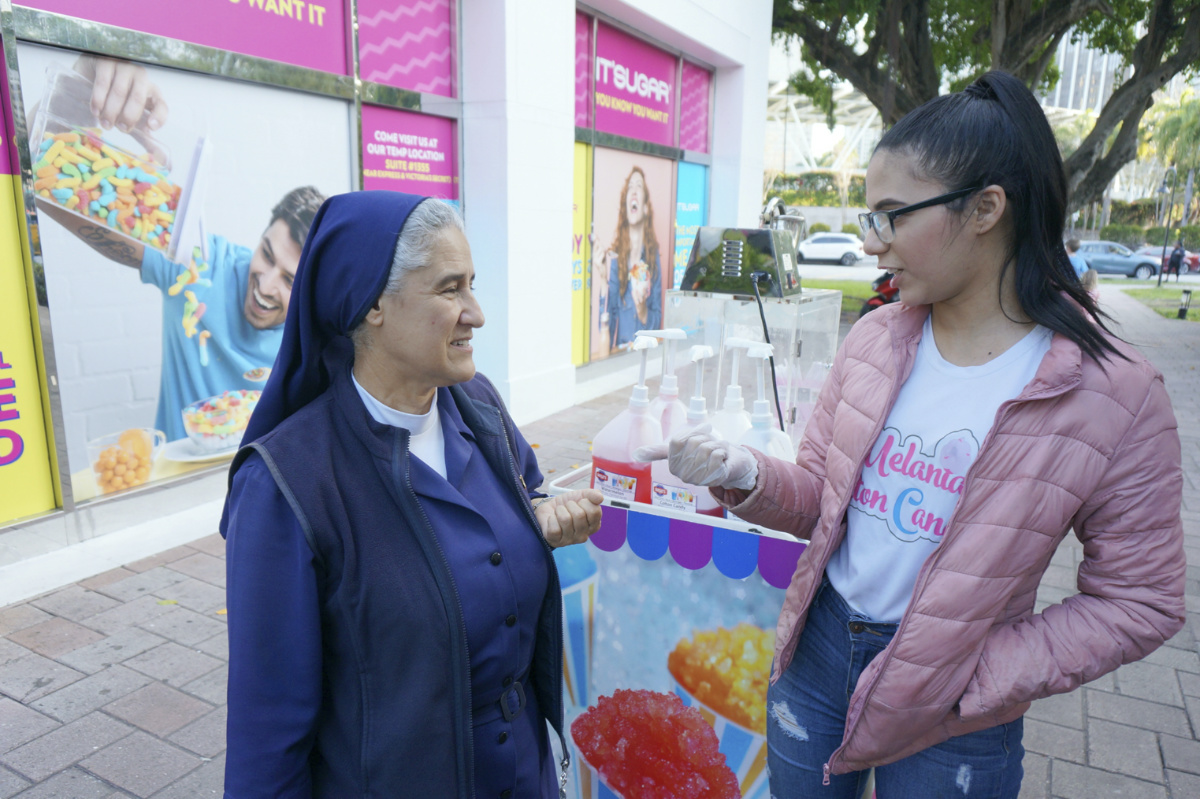
Sister Consuelo Gómez, left, talks with Daniela Valletero, a Venezuela migrant that Gomez helped settle in her new US life, on Monday, 20th February, 2023 in Miami. Valletero and her younger sister met Gómez when they went to mass at La Ermita, a shrine to Our Lady of Charity, that’s long been the first stop for many fleeing Latin American countries. Many migrants go to the church to thank the Virgin Mary for safe passage and a chance for a better life in Florida. PICTURE: AP Photo/Giovanna Dell’Orto.
Two Venezuelan sisters also showed up at the Ermita, the youngest clutching a little Virgin medal she credited with safe passage. With a spontaneous donation from a family who noticed them at Mass, Gómez helped the young women get their own place as well as jobs that allow them to send money back to their ailing mother.
“Here I motivate myself, even though, yes, I miss my family,” said older sister, Daniela Valletero, who works two jobs, six days a week. “Here I feel that I’ll make it.”
That’s the kind of faith that motivates Marylin Rondon, an attorney originally from Venezuela whose weekly prayer group of professionals from Latin America prepares hundreds of sandwiches for the nuns to distribute to migrants and the homeless.
On a recent evening at her house, they prayed the rosary as they briskly apportioned bologna and cheese.
“As a Catholic, you can’t stop at sadness,” Rondon said. “The biggest faith is that of the one who is arriving. He has to depend 100 per cent on providence.”
Outside the Ermita shrine, a couple stood under the palms, their homeland of Cuba some 320 kilometres across the sea. Roberto Sardiñas came seven years ago through the Mexico border, and in December managed to get his wife, Dadiana Figueroa, to immigrate legally through family reunification.
Asked about the influx of new arrivals, Sardiñas said it would be selfish to argue anything but that “all who can come, let them come.”
“The ideal would be that freedom existed in Cuba,” Figueroa added, staring at the ocean.






